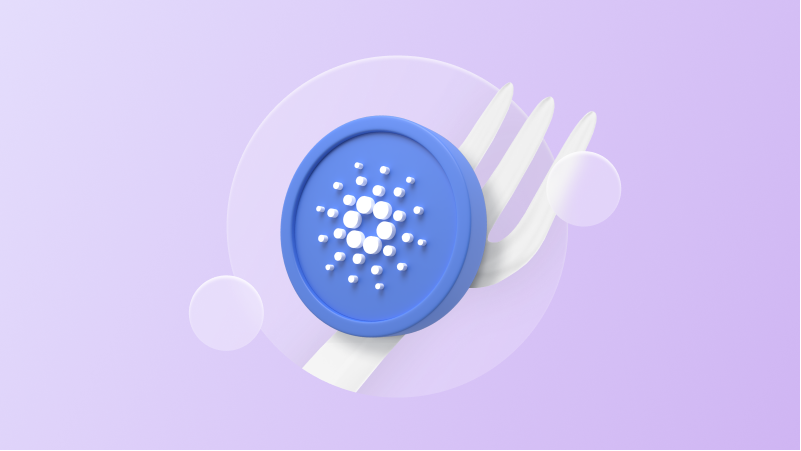Everybody is crazy about Ethereum Merge, but how about Cardano’s hard fork? It seems like everybody forgot about that one and shifted their entire focus on Ethereum. Time to balance the scales.
What Is Cardano?
The Cardano ecosystem is created as a third-generation blockchain platform consisting of a settlement layer (CSL) and a computation layer (CCL). The CSL is the routing layer for all the control layers and systems. The CCL layer helps the blockchain to replicate the Bitcoin (BTC) ecosystem’s smart contract platform, Rootstock (RSK blockchain).
The Cardano has 5 eras: Byron, Shelley, Goguen, Basho, and Voltair. Each era reflects a development cycle and is focused on a set of functionalities that will be delivered across multiple code releases.
The blockchain has a native currency ADA that can be exchanged for fiat currencies such as the U.S. dollar and stored on crypto wallets. The token became quite popular, so businesses have started integrating dedicated ADA payment gateways, allowing customers to make online purchases with ADA. Users can also earn ADA tokens by verifying payment transactions on the Cardano platform, a process known as staking. It involves adding existing ADA holdings to a staking pool, which the node operators then repurpose to validate and confirm transactions in real time.
What Is a Hard Fork?
Okay, so how about forks? We know there are soft and hard forks, but what are they?
Talking of blockchain technology, a hard fork means a radical change to the protocols of a blockchain network. A hard fork splits a single cryptocurrency into two and results in the validation of blocks and transactions that were previously invalid, or vice-versa. So, all developers must upgrade the protocol software’s latest version. The matter here is that the new version is no longer backward-compatible with earlier blocks.
Why Do We Need Those Forks?
Everything is on purpose. The main forks’ points are:
- Adding functionality
- Addressing security risks
- Resolving a disagreement within the community about the cryptocurrency’s direction
There were some well-known cases of hard forks, such as Bitcoin Cash, a blockchain that emerged in August 2017 from a fork of Bitcoin, and Ethereum Classic, a hard fork that turned out from Ethereum. Finally, Terra was forked, creating a new Blockchain and a new LUNA token but without the stablecoin.
Cardano’s Vasil Hard Fork Review
So, now when we’ve brushed up some basics, let’s dive into Cardano’s Vasil Hard Fork.
The upgrade is introducing five critical mechanisms created to improve the Cardano blockchain’s overall performance.
By the way, do you know where the fork’s name came from? Just in case you like trivia. The fork is named after a Bulgarian mathematician and Cardano ambassador Vasil Dabov. So, let’s go back to the calls.
CIP-31 (Reference Inputs)
CIP-31 introduces a new kind of input, a so-called reference input, which would allow looking at an output without spending it. That will help to facilitate further access to information stored on the network without worrying about the churn associated with spending and recreating UTXOs.
So, a user could inspect the state of an on-chain app without consuming its output.
CIP-32 (Inline Datums)
This enables datums to be attached to outputs instead of being attached to datum hashes. This provides a quicker and simpler communication of datum values between the users.
The Cardano developers expect many DApp developers to use this feature because it will simplify the overall state of their systems substantially.
CIP-33 (Reference Scripts)
The Cardano Improvement Proposal 33 aims to allow attaching reference scripts to outputs, while enabling scripts to satisfy script requirements throughout the validation process, rather than requiring the spending transaction to do so.
CIP-40 (Collateral Outputs)
This one contains a new type of output to transactions called Collateral Outputs. It can improve the network’s scalability.
Diffusion Pipelining
They also called it Cardano’s consensus layer scaling solution. It helps to cover some of the steps that a block needs to go through as it moves across the chain in an attempt to enable them to happen simultaneously.
When Will Vasil Hard Fork Happen?
That’s a tricky question, as nobody can tell the exact date. The last what we’ve heard from the Cardano’s founder Charles Hoskinson is ‘sometimes in September.’ He explained that the delay in the fork caused problems in the code and the time needed to test the upgrade adequately.
Who Supported the Fork?
Binance has supported Cardano's new upgrade and updated its Nodes. Many DApps running on the Cardano blockchain are in touch with Cardano Foundation and watching the progress of the Vasil update. These DApps have tested their platforms "since the earliest days of the Vasil devnet." Cardano’s hard fork developer also claimed that they didn't detect any new bugs or hard-fork blockers during the upgrade.
Wrap-Up
Charles Hoskinson assures that the Vasil hard fork will provide a “massive performance improvement to Cardano and its smart contract capabilities.”
The Cardano developers and other blockchain experts have suggested that Vasil can stand out thanks to the fork because it will allow using reference scripts that speed up and increase smart contracts.
To put it in a nutshell, everybody is waiting for better performance and positive influence of the upgrade. The time, as usual, will reveal if it’s for better or worse.
